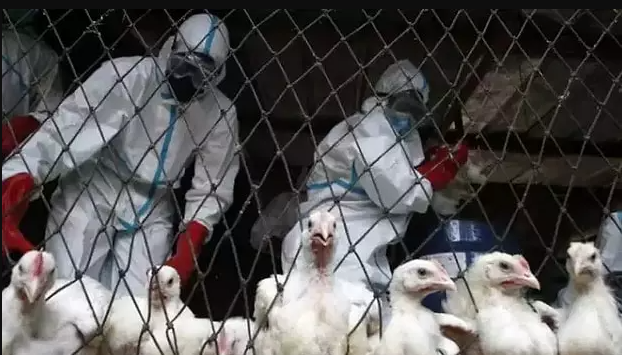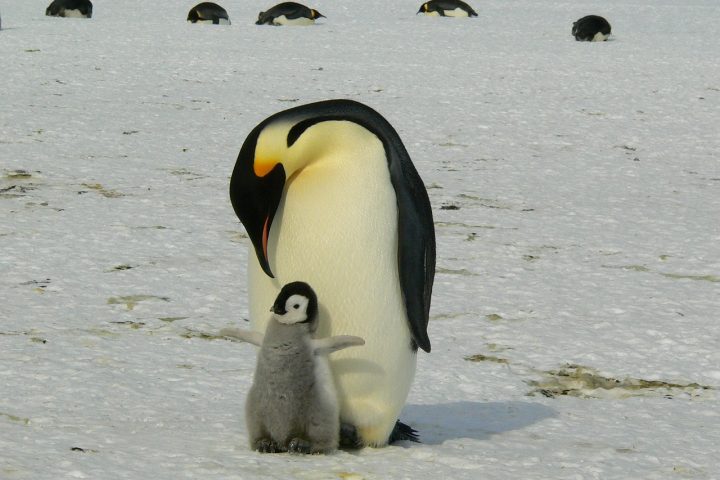Masses of animals are currently dying of bird flu all over the world. But it is no longer just birds that are affected. The virus is also affecting more and more mammals. So is the leap to humans not far off?
The world is currently experiencing the worst wave of bird flu ever documented. Tens of millions of wild birds have already died. No one knows the exact number. In the meantime, however, more and more mammals are becoming infected. The H5N1 virus has already been detected in dolphins, seals, otters, raccoons, martens and, most recently, in four dead foxes in Germany. Concern is growing: Is the jump to humans not far off?
[su_posts posts_per_page=”1″ tax_term=”22801″ offset=”1″ order=”desc” orderby=”id” post_status=”any” ignore_sticky_posts=”yes”]
The World Health Organization (WHO) emphasizes that as avian flu spreads, so does the risk of it spreading to humans. However, this is “not a cause for panic,” said Sylvie Briand, director of WHO’s Department of Preparedness for Infectious Threats, in Geneva. “But we need to assess how well prepared we are.”
Mass seal deaths
Just recently, a mass die-off among seals caused quite a stir: according to a U.S. research team at Tufts University in Medford, more than 330 harbor seals and grey seals died from avian flu along the North Atlantic coast in June and July 2022 alone. This finding, published in the journal Emerging Infectious Diseases, joins a mass die-off of 3,500 sea lions in Peru, a seal mortality at the mouth of the St. Lawrence River in Canada and a similar event in the Caspian Sea.
It is well known that H5N1 is nearly 100 percent fatal in waterfowl. The study now shows that this could also apply to mammals: All seals that tested positive for the virus were already dead at the time of sampling or succumbed to the pathogen shortly thereafter.
Degree of adaptation still uncertain
Whether and to what extent the virus has already adapted to a new class of animals is as yet uncertain. At the very least, there is speculation that the virus has spread directly between mammals. The other possibility would be that the seals contracted it through excrement from a sick bird or with water contaminated by it, or by eating an infected bird.
According to the Friedrich-Löffler-Institut (FLI), sporadic transmission of bird flu viruses to mammals has already been observed several times – including to humans. However, according to previous experience, transmission seems possible only in close contact with sick or dead birds and their products or excretions, explains the Robert Koch Institute (RKI). This is because the receptors to which the virus binds in the respiratory tract of birds are less common in the respiratory tract of mammals. But what if the virus mutates?
“Incredibly worrisome”
Many cases in which people had contracted the H5N1 virus through contact with birds were mild. In Germany, there has been no confirmed case at all. However, severe courses of the disease can also occur. According to the World Health Organization (WHO), more than half of the 868 cases of H5N1 infection in humans reported worldwide between 2003 and 2022 died. How deadly the virus really is for humans, however, cannot be deduced from this, according to experts. Infections with no or only mild symptoms are not usually reported and are not included in the statistics.
Nevertheless, the number of fatal cases could increase if the virus continues to adapt to mammals and eventually to humans. Early indications of the disturbing trend come not only from American seals, but also from mink on a farm in Spain. “Incredibly worrying,” Tom Peacock, a virologist at Imperial College in London, calls the bird flu outbreak there last year in the journal Science. “The virus may have been passed from mink to mink – that’s a new quality.”
More hurdles ahead of dangerous adaptation
Researchers found mutations of the pathogen in the animals that are responsible for making the virus more able to replicate in mammals. “However, the observed mutations are only first steps toward adaptation,” the FLI informs. For effective mammal-to-mammal transmission, the virus would need to overcome a number of other hurdles – “for which there is no evidence so far.” The 11 employees at the mink farm in Spain had not become infected.
Health authorities nevertheless view the increasingly frequent findings of mammals dying from bird flu with concern. That’s because with each infection comes the possibility of adaptation, making the virus dangerous to humans as well. Meanwhile, the virus is active throughout the year and not just in the fall, as was previously the case. According to the FLI, this is a sign that the pathogen has become more resistant.





